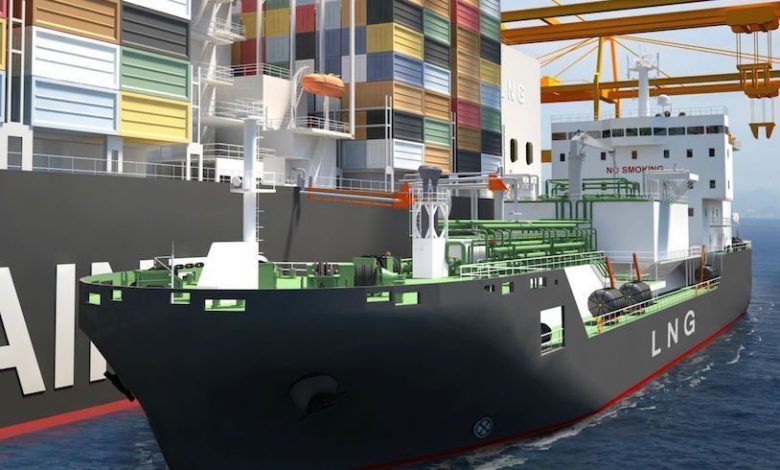Why LNG represents a bridge of pragmatism on shipping’s road to decarbonisation

Peter Keller, chairman of SEA\LNG and executive vice president, Tote, writes exclusively for Splash today, explaining why he is adamant that LNG is unrivalled as the future fuel for shipping.
We should all celebrate the landmark decision that came out of the IMO’s MEPC meeting in April. Reducing greenhouse gas emissions by at least 50% by 2050, compared to 2008 levels, gives a clear direction and sets targets that are aggressive but likely attainable. The work starts now to collaborate as an industry and make the targets a reality over the coming decades. Accelerating the uptake of LNG as marine fuel remains critical as a long-term, bridging solution for the marine energy transition.
There are no viable alternatives to LNG in the forseeable future if the maritime industry is to continue to contribute significantly to air quality while moving forward in a positive way on CO2. SOx, NOx and PM reductions need to happen now – we must continue our decades-long drive to improve air quality. We need to finish this initiative while also taking a major step forward in terms of GHG reductions. In this context, LNG is unrivalled. It is available now, commercially viable, and scalable to meet the industry’s needs.
The naysayers all point to other fuels and solutions, but where are they? Hydrogen, ammonia and electrification, for example, are all immature and unproven technologies. Academics may seek utopia but the shipping industry cannot wait for that; it must be pragmatic in continuing as the backbone of the global economy. Technology will produce more alternatives but will they be safe? Will they be scalable to long ocean voyages? Will they be financially viable? Will they be sustainable in the long-term? And when will all of this happen?
From a big picture perspective, the shipping industry has adapted to new fuels before; for example, the introduction of liquid fuels at the turn of the century. But transitions evolve and take time – you can’t just flick a switch. When, and if, a viable alternative to LNG is available in a safe and abundant form, we will still see LNG used as a marine fuel for many decades to come as we bridge to ever newer, unknown and untested technologies.
Shipowners have very complex decisions to make. Vessel types, trading routes, client requirements, financial realities, and other factors play a part in any significant capital decision, but LNG will have to be a major consideration in the months, years and decades ahead.
The current reality is that major ports around the world are embracing LNG with actual investments or funded plans and studies to close the so called ‘last mile’ of bunkering. And when it comes to the future, LNG-fuelled vessels and bunkering infrastructure can easily switch from fossil-fuel LNG to renewable, or zero-emissions LNG, meaning that investment in LNG-fuelled ships and bunkering infrastructure today does not lock the shipping industry into a rigid GHG emissions trajectory. It’s important to note that almost all LNG propulsion systems are dual-fuel, meaning they are highly flexible, able to use a wide range of fuels, from fossil fuels including marine gasoil, fuel oil and LNG to low carbon fuels, such as biofuels and renewable LNG. This flexibility enables ship owners to transition, with minimal cost i.e. using the same engines, to lower emission fuels.
In addition, advancements in dual fuel technology and propulsion, enhanced control systems, and future use of gas turbine technologies present further opportunities for increased GHG reductions from LNG. And what’s more, BioLNG (from biogas) can be used as a ‘drop-in’ fuel, significantly reducing GHG emissions, while longer term, ‘power-to-gas’ is a key technology with the potential to produce large volumes of renewable LNG.
Despite many unanswered questions, what’s clear is that – to remain commercially viable and safe – pragmatism must prevail when it comes to navigating the road to a decarbonised future for shipping. There may be multiple pathways to reaching the desired end point, but many of them are going to be bumpy for a long while yet. Getting from A to B is going to require an economically and environmentally viable fuel that can carry the industry forward and evolve along the way. That’s why LNG as a marine fuel offers such unrivalled potential for achieving shipping’s short- and long-term energy goals.
